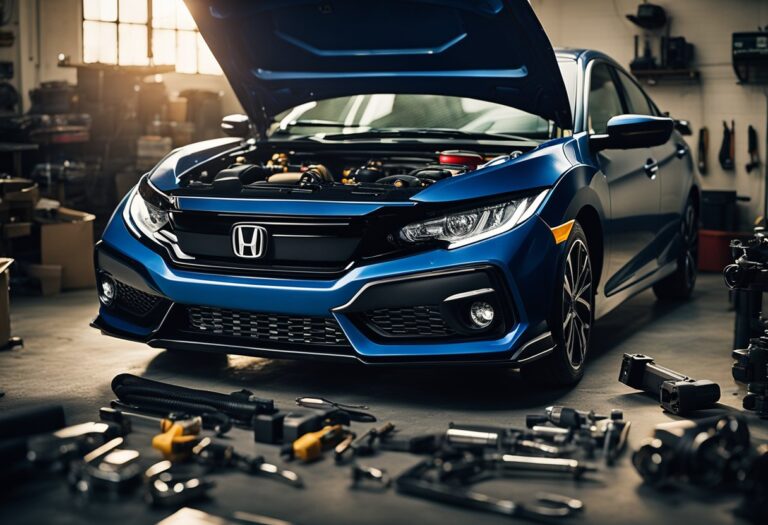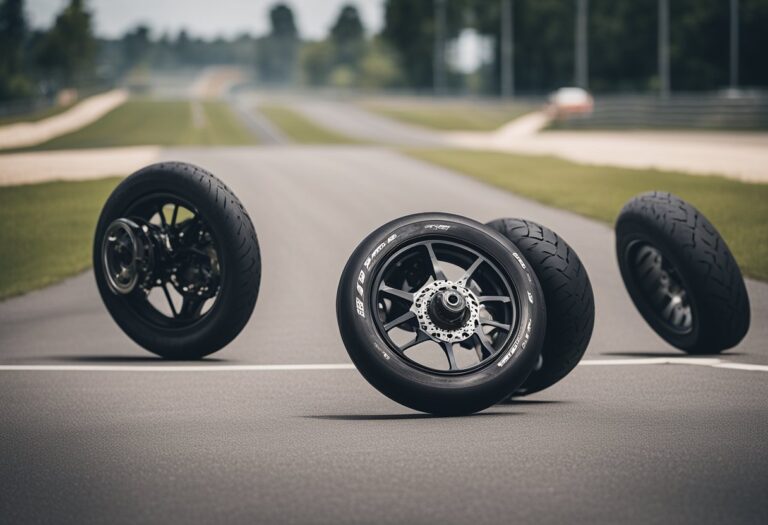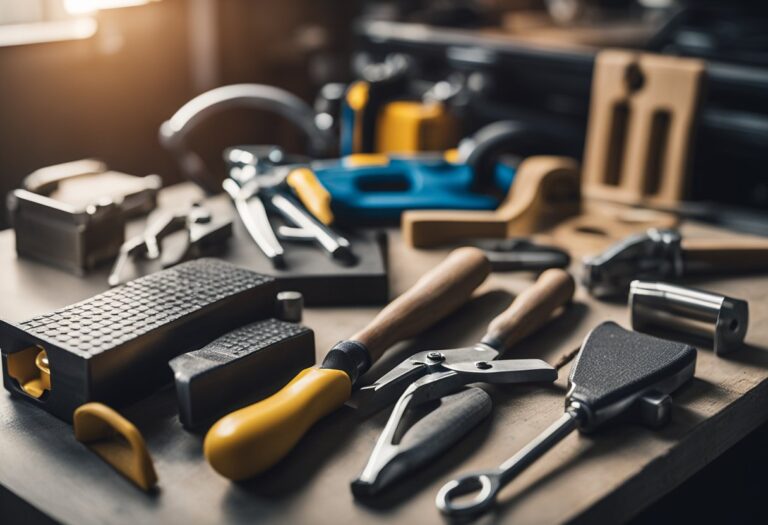Replacing Worn Out Clutch Cables: A Guide to Smooth Shifting
Replacing worn out clutch cables is an essential maintenance task that ensures the smooth functioning of a vehicle’s transmission system. The clutch cable is a vital component that connects the clutch pedal to the clutch mechanism, allowing the driver to engage and disengage the clutch. Over time, the clutch cable can wear out due to constant use, leading to a range of issues, including difficulty in shifting gears, clutch slippage, and even complete clutch failure.

Understanding Clutch Cables is the first step in replacing a worn-out clutch cable. It is essential to have a basic understanding of how the clutch cable works and its role in the transmission system. The next step is Preparation for Replacement, which involves gathering the necessary tools and parts and ensuring that the vehicle is in a safe and secure location. Accessing the Clutch Cable is the next step, which involves removing any components that may be blocking access to the clutch cable.
Key Takeaways
- Understanding the role of the clutch cable is crucial in replacing a worn-out clutch cable.
- Proper preparation, including gathering necessary tools and parts, is essential for a successful clutch cable replacement.
- Accessing and removing the old clutch cable is a critical step in the replacement process.
Understanding Clutch Cables

Function of a Clutch Cable
A clutch cable is an essential component of a manual transmission system, connecting the clutch pedal to the clutch release mechanism. When the driver presses the clutch pedal, the cable transmits the force to the release mechanism, disengaging the clutch and allowing the driver to change gears smoothly. The cable is responsible for transferring the mechanical energy from the driver’s foot to the clutch, making it an important part of the transmission system.
Signs of Wear
Over time, clutch cables can become worn or damaged, leading to problems with the clutch operation. Some common signs of wear include difficulty shifting gears, a slipping clutch, or a clutch pedal that feels loose or spongy. If the cable is frayed or broken, it may need to be replaced entirely. It is important to inspect the cable regularly to ensure it is functioning properly and replace it if necessary.
In conclusion, understanding the function of a clutch cable and recognizing signs of wear is crucial for maintaining a properly functioning manual transmission system. By regularly inspecting and replacing worn out clutch cables, drivers can ensure a smooth and safe driving experience.
Preparation for Replacement

Tools Required
Before replacing a worn out clutch cable, it is important to gather all the necessary tools. These tools include a socket set, pliers, a wrench, a cable lube tool, and a new clutch cable. It is recommended to have a service manual for the specific make and model of the vehicle to ensure that the correct tools are used and the replacement process is done correctly.
Safety Precautions
Safety should always be a top priority when working on a vehicle. Before replacing a worn out clutch cable, it is important to take the following safety precautions:
- Ensure that the vehicle is parked on a level surface and the engine is turned off.
- Use wheel chocks to prevent the vehicle from rolling.
- Wear protective gear, such as gloves and safety glasses.
- Disconnect the negative battery cable to prevent electrical shock.
- Follow the manufacturer’s instructions when lifting the vehicle and supporting it with jack stands.
By following these safety precautions, the risk of injury or damage to the vehicle can be significantly reduced. It is important to take the time to prepare and gather the necessary tools before starting the replacement process to ensure a successful and safe outcome.
Accessing the Clutch Cable

Vehicle Positioning
Before beginning the process of accessing the clutch cable, it is important to position the vehicle properly. The vehicle should be parked on a level surface and the parking brake should be engaged. If the vehicle has a manual transmission, it should be in neutral.
Removing Obstructions
Once the vehicle is properly positioned, the next step is to remove any obstructions that may be in the way of accessing the clutch cable. This may include removing the battery or air intake ducts. It is important to refer to the vehicle’s owner’s manual for specific instructions on removing these components.
After removing any necessary obstructions, the clutch cable can be accessed for inspection or replacement. It is important to inspect the cable for any signs of wear or damage, such as fraying or kinks. If any damage is found, the cable should be replaced immediately to prevent further damage or failure.
In summary, accessing the clutch cable requires proper vehicle positioning and removal of any obstructions in the way. Inspection and replacement of the cable should be done if any signs of wear or damage are present.
Removing the Old Clutch Cable

Disconnecting the Cable Ends
Before removing the old clutch cable, it is necessary to disconnect the cable ends. This can be done by locating the cable adjuster and loosening it with a wrench. Once the adjuster is loose, the cable end can be removed from the clutch lever.
Next, locate the cable end at the transmission and remove it from the clutch release arm. It is important to take note of the routing of the old cable to ensure the new cable is installed correctly.
Cable Extraction
With the cable ends disconnected, the old cable can be extracted from the motorcycle. It is important to inspect the cable for any signs of damage or wear. If the cable is damaged or worn, it should be replaced with a new one.
To extract the cable, follow the routing of the old cable and remove any clips or clamps securing it in place. Once the cable is free, it can be removed from the motorcycle.
It is important to take note of the routing of the old cable to ensure the new cable is installed correctly. When installing the new cable, reverse the steps taken to remove the old cable, ensuring the cable ends are securely attached and the cable is properly routed.
By following these steps, one can easily remove the old clutch cable and prepare for the installation of a new one.
Installing the New Clutch Cable

Routing the Cable
To begin the installation of the new clutch cable, the first step is to route the cable from the clutch pedal to the clutch release mechanism. Make sure the cable is properly aligned and secured to avoid any interference with other components.
Connecting the Cable Ends
Once the cable is routed, the next step is to connect the cable ends. This involves attaching the cable to the clutch pedal and the clutch release mechanism. It is important to ensure that the cable is securely attached and properly adjusted to prevent any slippage or misalignment.
Adjusting Cable Tension
After the cable is connected, the final step is to adjust the cable tension. This ensures that the clutch operates smoothly and efficiently. The cable tension can be adjusted using the adjustment nut located near the clutch release mechanism. Adjust the tension until the clutch pedal feels firm and the clutch engages and disengages smoothly.
Overall, replacing a worn out clutch cable is a straightforward process that can be completed with basic tools and some mechanical knowledge. By following these steps, the new clutch cable can be installed quickly and easily, ensuring that the vehicle’s clutch operates smoothly and efficiently.
Post-Installation Checks

Test Drive
After replacing a worn-out clutch cable, it’s important to take the vehicle for a test drive. This will ensure that the clutch is functioning properly and there are no issues with the installation. During the test drive, the driver should pay attention to the clutch engagement point, smoothness of gear changes, and any unusual noises or vibrations.
Final Adjustments
If the test drive reveals any issues with the clutch, adjustments may need to be made. It’s important to refer to the vehicle’s owner manual for specific instructions on adjusting the clutch. Generally, adjustments can be made at the clutch cable adjuster or at the clutch pedal.
When making adjustments, it’s important to make small changes and test the clutch after each adjustment. This will prevent over-tightening or over-loosening the cable, which can cause further issues.
Once the clutch is functioning properly, it’s recommended to check the clutch cable periodically for wear and tear and make any necessary replacements to prevent future issues.
Frequently Asked Questions

What are the signs that indicate a clutch cable needs replacement?
Some common signs that indicate a clutch cable needs replacement include difficulty shifting gears, a loose clutch lever, and a clutch that slips or fails to engage properly. If you notice any of these symptoms, it may be time to replace your clutch cable.
How do you determine if a clutch cable is broken or just needs adjustment?
A broken clutch cable will typically result in a complete loss of clutch control, while an improperly adjusted cable will often cause difficulty shifting gears or a slipping clutch. If you suspect your clutch cable is broken, it’s best to have it replaced as soon as possible.
What is the typical cost range for professional clutch cable replacement?
The cost of professional clutch cable replacement can vary depending on the make and model of your motorcycle, as well as the location and expertise of the mechanic. On average, you can expect to pay anywhere from $100 to $300 for clutch cable replacement.
Can a clutch cable be repaired, or does it always require full replacement?
In most cases, a broken clutch cable will require full replacement. However, if the cable is simply stretched or improperly adjusted, it may be possible to repair it instead. It’s best to consult with a professional mechanic to determine the best course of action.
What tools are needed to replace a motorcycle clutch cable?
To replace a motorcycle clutch cable, you will typically need a set of wrenches, pliers, and cable lubricant. It may also be helpful to have a motorcycle stand or lift to make the process easier.
Are universal clutch cable repair kits reliable for temporary fixes?
While universal clutch cable repair kits can be a convenient solution for temporary fixes, they are not always reliable in the long term. It’s best to have your clutch cable professionally replaced to ensure proper function and safety.






